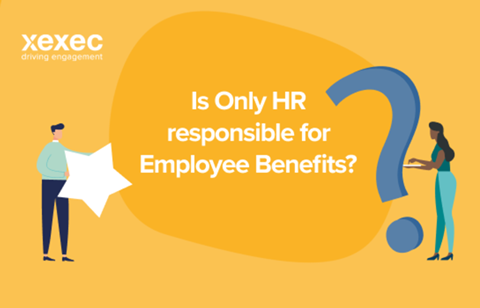
An organisation’s HR department usually carries the responsibility of overseeing and managing the Employee Benefits programme. However, over the last decade we have seen both the breadth of Employee Benefits Schemes increase and with that the number of people involved. From the traditional provision of pensions and medical insurance, we are now used to seeing reward and recognition, employee wellbeing, salary contribution schemes (travel, bicyle etc…) and employee discounts as standard in organisations around the world.
Given the number of elements that now make up a benefits package within organisations, HR has had to either create new departments, increase their own responsibility or as you shall read, rely on others to help. So, the short answer to this blog is that, yes, HR is still responsible for running any employee benefits schemes within an organisation. However – they are not wholly responsible for making it a success.
Senior buy-in
As with most companywide initiatives, it is especially important to have the support of senior management and in particular, the budget holders and key decision makers. There are two main reasons for this. Firstly, so that the HR team can push out these initiatives and use a senior voice to encourage internal adoption and uptake of each scheme. For many benefits such as pensions and medical, many people already understand the benefits and responsibility of the business to supply these. However, for other initiatives such as Reward and Recognition, employees need encouragement and education to take advantage of these platforms.
Secondly, the benefits that organisations will realise based on the successful implementation of these schemes are not always clearly measurable against revenues or short-term business objectives. Many of the KPIs such as reduced churn or reducing the cost of acquisition of talent, are only measurable after a meaningful period. Therefore, you need to the ongoing support of the business who understand the benefits you are bringing to the business and the strategy that has been agreed to achieve this.
Team leaders and peers
As well as senior management, it is vital that the team leaders and peers are not just aware but have engaged with the employee benefits with a business. This has two significant benefits. Firstly, if an employee is happy at their place of work and feels that the benefits their employer offers them makes them feel special or adds real value to their life on top of their basic financial package, they will tell their friends about it.
In this case, the saying “your staff are your best advocates” rings true. Not only will this help to attract the right type of talent to your business, but it will also demonstrate that you have a happy workforce.
Secondly, people talk at the “water cooler” – although today it would be more over Zoom and MS Teams. People like to tell each other how they feel like they have benefitted from the system and benefits in place, be it saving money through the Employee Discounts scheme, found an amazing holiday using the lifestyle concierge service or have been nominated for an internal award through the Reward and recognition platform. This all helps drive up engagement and use of the benefit on offer.
In addition, and especially when it comes to Reward and Recognition, the more team managers use this to reward and recognise their teams, the more other team leaders will adopt it – this then becomes a success through the number of rewards and awards that have been given – and whilst this is run by HR it is driven by the employees.
Communications
If no one knows about the benefits on offer – no one can use them. Hence, beyond HR it is critical for the internal and external communications teams to work with HR to ensure that everyone knows about the benefits on offer – and how best to take advantage of them.
In many instances there will be a central employee portal that is linked to an employee benefits hub where benefits can be promotes, but this is not always the case. Therefore, the communications team needs to ensure that there are regular emails and internal notices that showcase what is on offer. In many cases, the service vendors will also take on this responsibility.
In addition, it is the role of the external communications team to let prospective employees and partners know about the amazing benefits the HR team has put in place. Afterall, everyone knows about the amazing – and sometimes strange – employee benefits on offer at businesses such as Google, Facebook, Amazon and Netflix – so why shouldn’t they know about yours?
Having the right vendors
The final part to this is the role that external vendors can play in the internal success of a business’s employee benefits scheme. We touched on it earlier, but the vendors should be offering to help and support the communications effort to help raise awareness and increase engagement amongst employees. Some do this through automated emails and others work with the HR and internal communications teams by providing templates and content.
In addition, the best vendors constantly keep the benefits on offer fresh. For example, when the Covid-19 global pandemic hit last year, did your vendor amend the benefits on offer to help and support a remote workforce or increased working from home? Afterall, employees no longer wanted to pay for access to a gym near their office they never went to. These top tier vendors will be more proactive and have a keen interest in the needs of employees rather than simply selling the discounts on their platform.
So back to our original question of is HR responsible for Employee Benefits? - the true answer to this is that whilst, yes, it is the role of HR to ensure the company has benefits, it is a collective responsibility to ensure that they add both value to the employees and business alike.
To find out more about employee benefits download our e-book below.











